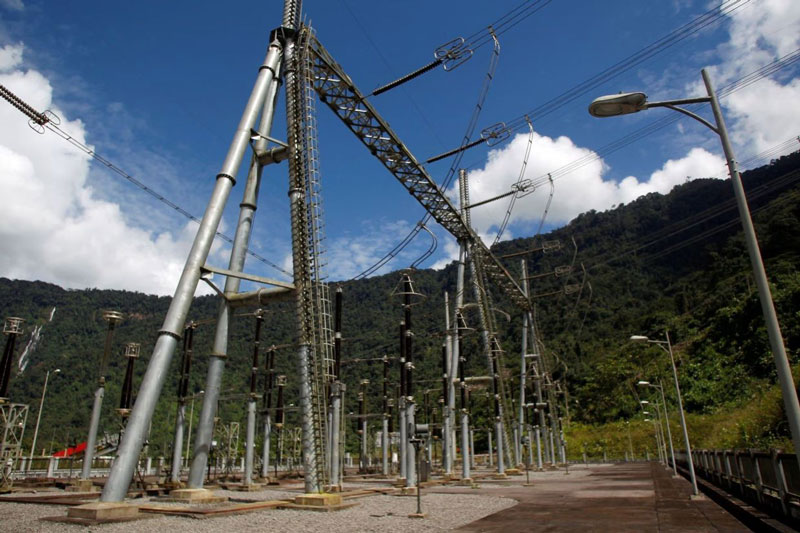The timeline for the end of blackouts depends on various factors, including the successful contracting and operation of the targeted 465 MW, as well as hydrological conditions.
Ecuador is currently facing a significant energy crisis marked by persistent blackouts. In response to this pressing issue, Juan José Espinosa, the Vice Minister of Electricity, has detailed the government’s multifaceted strategy aimed at mitigating the crisis and restoring stability to the nation’s power grid. This comprehensive plan involves collaboration on an international scale, the strategic importation of gas, and the active engagement of local private industries. The goal is clear: to strengthen the energy sector and bring an end to the recurrent blackouts that have been a source of frustration for the Ecuadorian population.
Government needs to secure an extra 465 MW of energy
At the heart of the government’s initiatives is the imperative need to secure an additional 465 MW of energy, a move that is anticipated to alleviate the current power shortages. Espinosa emphasizes the urgent appeal to both the international community and local companies capable of providing immediate solutions. The focus is on obtaining mobile maritime or land-based energy sources, such as containerized generators and maritime solutions from anchored ships. The bidding process, initiated recently, sets the ambitious target of finalizing contracts between November 17th and 18th, with subsequent signings anticipated within 20 to 30 days.
Simultaneously, the government is exploring the strategic importation of gas, a process currently being managed by Petroecuador. This move is expected to augment power production by an additional 100 MW through the Termogás Machala facility, representing a critical step in bridging the immediate energy deficit.
Efforts are also underway to engage local private industries and incentivize their active participation in bolstering the national energy grid. Espinosa underscores the importance of industries such as sugar and oil, offering ‘enabling titles’ to facilitate their involvement. While ongoing discussions with private companies capable of generating thermal and non-thermal energy continue, the government is also considering the possibility of providing subsidized diesel to encourage their contribution.
One notable collaboration with the private sector involves sugar factories that utilize bagasse (a fibrous material left behind after harvesting sugarcane) for energy production. Several sugar factories have already been granted permits, with additional discussions underway with interested companies. This collaboration holds the potential to inject between 150 to 170 MW of additional energy into the national grid.
Peru and Colombia must be part of the mix
Against this backdrop of domestic initiatives, Ecuador has taken a significant step by initiating energy imports from Peru. This strategic move not only diversifies the nation’s energy sources but also offers a cost-effective alternative compared to previous transactions with Colombia, where prices soared to 57 cents per kWh. Current energy imports from Peru are priced between 25 and 28 cents per kWh, a development that aligns more sustainably with Ecuador’s energy budget.
Collaboration with Colombia is also actively underway, with technical discussions already in progress. However, Espinosa emphasizes the need for careful consideration of supranational regulations before long-term contracts can be signed. The envisioned collaboration aims not only to secure a stable energy supply but also to explore mechanisms that could potentially lead to a reduction in energy prices over the long term.
As Ecuador navigates these intricate solutions to address the energy crisis, Espinosa provided insights into the timelines associated with the end of blackouts. The termination of blackouts hinges on various factors, including the successful contracting and operationalization of the targeted 465 MW. The timeline, he notes, is contingent on completing these contracts by mid-November, with the subsequent 20-day integration period. Hydrological conditions also play a pivotal role in this equation.
The coming weeks will be crucial, and the government’s multifaceted approach to find sustainable solutions for Ecuador’s energy challenges may prove difficult to achieve.


Not sure why not one word about Solar power in this article? Enen on cloudy days Solar panels create power.
Hello Deb, thank you for your question.
Unfortunately, as discussed in this week’s article “Ecuador’s current energy crisis highlights the need to branch out from its reliance on hydroelectricity,” Ecuador’s 34 photovoltaic plants only currently provide less than 1% of the country’s energy needs.
It’s clear that they have been building these plants with the intent to further diversify their resources, but of course that takes time…
Solar should have been discussed in the article, but in the short term the Ministry didn’t see it as an option.